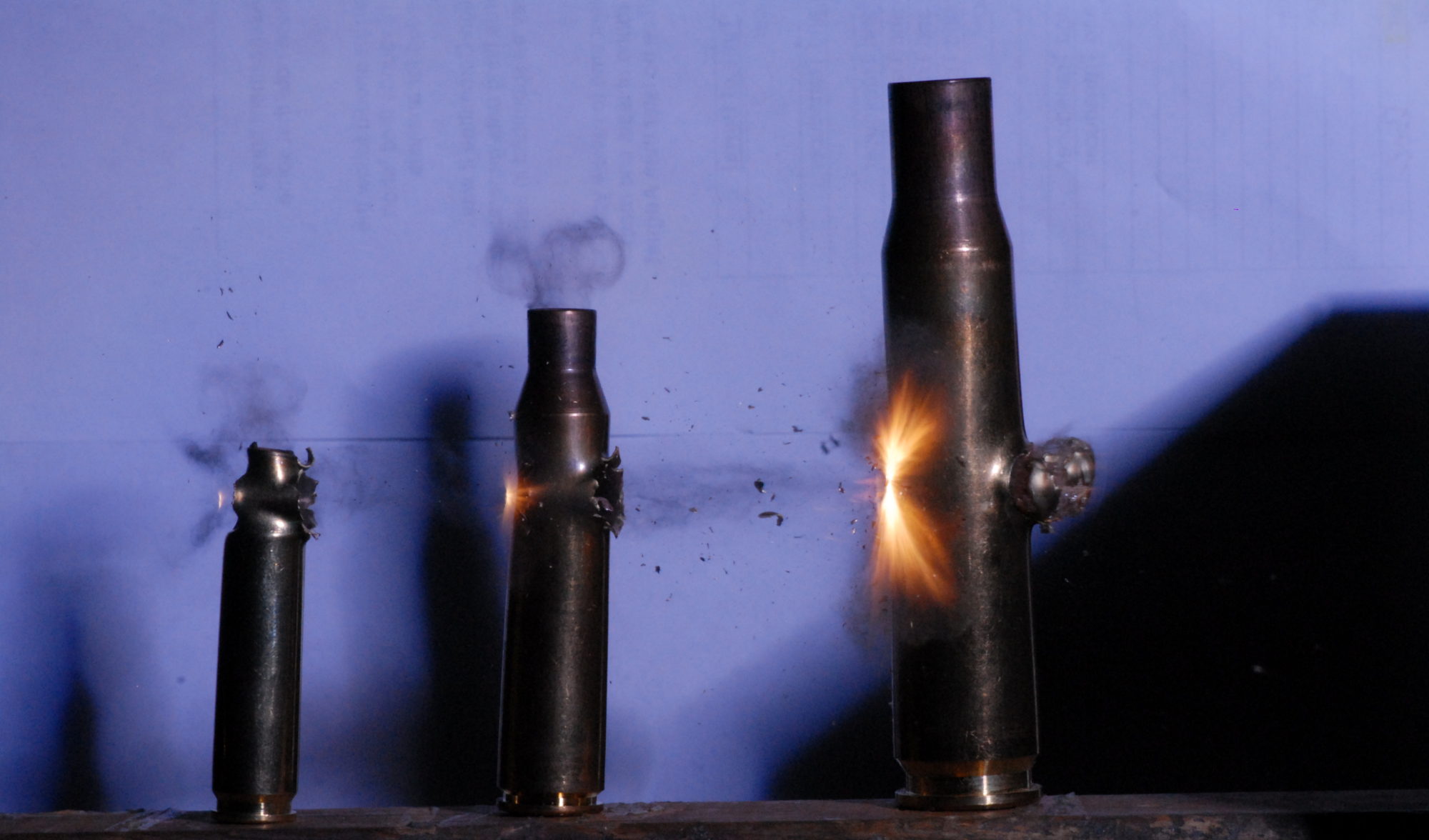Unlike cases that headspace on the case mouth (detailed here), cases that headspace on the shoulder require two gages in order to check the unloaded case, and a seperate gage to check the loaded case. This write up details the design of the case gage only, and only for cartridges that headspace on the shoulder. Though most of the principals apply to all of the rest of the gages.
Form Factor
As with all the gages, the stock diameter is 1.250 and turned down to 1.000 on either end. The length of the gage is determined by the Case Max length listed on the SAAMI Max Cartridge Print. If using a CIP print, then the Max Case length listed on the print.

The material used should be resistant to corrosion that may occur from handling on the daily basis, it is not uncommon to use a stainless steel alloy such as 17-4.
Internal Geometry
7.62×39 is used as an example for this gage. The cartridge is drawn to SAAMI standards and not the CIP standards. The market that the ammunition is intended to be sold in will determine the appropriate standard to use for the case and cartridge gages.

As with the 30 Carbine there is a thing or two to be learned about the cartridge when drawing up the internal geometry. With the 30 Carbine case we saw that the max cartridge allowed the rim diameter to be .0008in larger than the case body. In practice you will likely not see this. With the 7.62×39 the opposite is true. The case rim is slightly rebated. This is evident when we extend the line defining the body to the rim. It creates an internal ledge that would be impractical to machine. in order to design an effective gage the line defining the body is extended out until it meets the rim diameter of 0.4470in. From there a straight line 0.104in in length is drawn.
The purpose of this part of the gage is to check headspace, case length, and that the overall case geometry fits within the SAAMI max case. There is a seperate part of the gage that can check the case head geometry, so extending out the length of the case to the max rim diameter doesn’t affect the gage performance.

Once the internal geometry is finished, some prevision for labeling should be made. A example is included on the screenshot below. In order to check the headspace and case length, Go & No-Go steps must be cut into the gage. These dimensions are pulled from the SAAMI Max Cartridge Print, and should be equivalent to the tolerance given as shown below.


Case Head Gage
While the above gage is complete as it will check the case headspace, length and conformativity to SAAMI Max Cartridge, it cannot check the case head. For this we add a cut into the top of the gage to create pass through gage. This will check to make sure the cases doesn’t exceed max cartridge dimensions in the head of the case.

Be sure to use the dimensions exactly as listed and disregard the + or – tolerance following the dimension in the SAAMI drawing. The dimensions are max material dimensions and are what is required for a max cartridge gage to function properly.

Tolerances
Because this is a precision gage, extremely tight tolerances are used. For all geometry relating to the case and case head diameters are +.0001/+.0005 and lengths are -.0001/.0005. The 1.250 and 1.00 diameters are +/- .010 as they are non critical dimensions.
Case Gage Drawing
An example drawing will be generated in the future and posted here.
